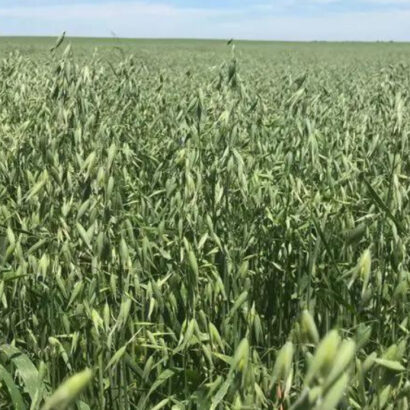Each year is unpredictable. Some years are too wet or some too dry. Stay proactive this next growing season and try planting winter annuals!
“Most cost-effective safety net for spring feed.”
In order to have a successful summer pasture, a warm May with adequate moisture is crucial. We never know what mother nature may give us each season, but you can be ready. If we happen to get a cool May, pasture grasses will be short. If there is not another feed option available, cows end up on the short grass which increases the risk of overgrazing and running out of feed early in the year.
That is where winter annuals come into play. Putting the cows out on covers or winter annuals allow for the pastures to rest and reduce the risk of overgrazing. This would then increase feed opportunities when cows are often heavily lactating with calves at their side. Planting winter annuals can help you be ready for whatever the spring weather throws at you.
Rye, Winter Triticale and Forage Winter Wheat are the big 3 winter annual options for spring feed.
Rye
Rye is known to have countless names: Rye Grain, Winter Rye or Cereal Rye. Rye is the most versatile winter annual there is. You can chop it, hay it, or turn the cows out to graze it. Compared to other winter annuals, rye quickly breaks dominance in the spring, which allows for phenomenal spring grazing opportunity. It functions as an exceptionally palatable forage for your livestock before it heads out.

Forage Winter Wheat
If you are looking to extend your haying window, Forage Winter wheat is the best winter annual for the job. This allows a producer to get their cash crops in and complete a first cutting of alfalfa before it will need to be hayed. Forage Winter Wheat is later maturing compared to rye and triticale. This is an awnless variety that provides cattle with a superior quality forage and yield.

Winter Triticale
Winter Triticale is a drought tolerant and high yielding winter annual. Compared to rye, Winter Triticale displays a wider blade that is shorter in height but tons out very well. If you are grazing Winter Triticale it is a very palatable forage for livestock even after its headed out. You can expect to harvest triticale roughly the first week of June.

Rye’s Allelopathic Effects
Cereal Rye is the most aggressive winter annual when competing with early season weeds. Partially because the root exudates inhibit the germination of weeds early in the season. Therefore, producers aerial apply or drill rye after harvest to get ahead of the weeds in the spring and reduce soil erosion. Winter Triticale and Forage Winter Wheat don’t have as strong of root exudates. If a producer wanted to plant sorghums, millets or teff right behind a winter annual, Winter Triticale or Forage Wheat would be the better options versus rye.
In front of cash crop, like soybeans, Cereal Rye is a great option due to the weed suppression it provides. Majority of the time, soybeans fields are sprayed two or three times for weed control depending on weed aggression. Cereal Rye can prevent the extra cost of a third spray in-season and even provide white mold reduction.
“Winter annuals provide the security to be able to withstand what will come.”
The Details
Figure out what you want to accomplish first, then find the seed to meet those needs. Right now, it’s too late to plant any of your millets, sudangrass, or oats. However, now until the end of October is the ideal time for planting winter annuals. Corn silage acres are a perfect spot to put winter annuals in because it is often close to home and can create a perfect spring calving area when pastures aren’t ready. The second-best place to plant winter annuals would be into soybean stubble. Most the time soybeans will be taken out in late September which would create an opportunity to get Rye, Triticale or Forage Winter Wheat in.
Winter annuals provide heaps of forage to be grazed, hayed or even chopped in May going into June. Once the cattle are off, the field can be sprayed or planted into right away to maintain moisture levels. Soybeans are a great cash crop after winter annuals, because it does not need the added nitrogen that grass crops usually need as well as having the ability to double crop. Given adequate moisture you could have a nice stand of soybeans before the fall.
Warm-season grass crops like Forage Sorghum, Millet or season-long cover crop mixes like Premium Graze are also all great options after haying or chopping the winter annual.
Tonnage
You will easily see 2 tons/ acre but there will be a lot of variability. It’s all dependent on what the year brings. One year you may only get 2 tons/acre and another year could be 7 tons/acre.
Planting winter annuals in the late summer to early fall provides you with a cost-effective safety net for spring feed. If you have any questions or want to plant your winter annuals this year, give us a call at 605.697.6306. View our winter annuals.




Discussion
0 Comments